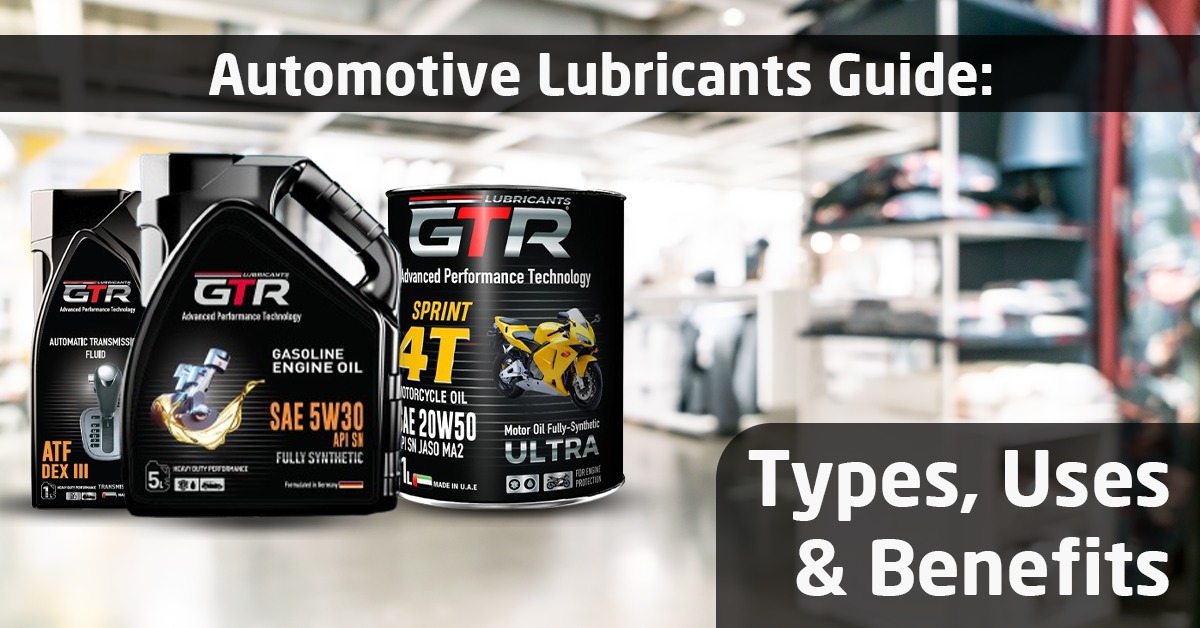Imagine driving through the Canadian winter, your engine struggling to start, or worse, seizing due to poor lubrication. Statistics show that over 40% of engine breakdowns are linked to improper lubricant use. Whether it’s diesel engine oil for trucks, synthetic lubricants for modern cars, or graphite lubricants for industrial fleets, the right choice determines vehicle performance and longevity.
But here’s the challenge: with so many motor oil types, viscosity grades, and lubricant additives, how do you pick the best? Should you go for high-performance lubricants, or stick to conventional engine oils? What about bulk orders if you’re exploring the business side as a distributor in Canada?
This guide answers those questions and more. We’ll cover types of lubricants, applications, benefits, and oil change tips, all tailored for Canadian drivers, distributors, and businesses.
“Success, like a well-maintained engine, requires consistency. Every choice matters, including the oil you use.”
Understanding Automotive Lubricants and Their Purpose
Automotive lubricants are fluids and greases designed to reduce friction, cool components, and protect engines.
Main categories of lubricants for automotive performance:
- Engine Lubricants (diesel engine oil, gasoline oils).
- Industrial Lubricants (for fleets, construction, transport).
- Synthetic Lubricants (enhanced performance in extreme conditions).
- Graphite Lubricants (heat-resistant, industrial-grade).
Key roles of lubricants:
- Reduce wear and tear.
- Control engine temperature.
- Prevent rust and corrosion.
- Extend engine life.
Types of Automotive Oils and Motor Oil Grades
1. Diesel Engine Oil
- High detergent levels for soot control.
- Essential for trucks, buses, and heavy-duty engines.
- Example: Best diesel engine oil in Canada includes Shell Rotella and Mobil Delvac.
2. Synthetic Lubricants
- Better stability in extreme cold or heat.
- Longer oil change intervals.
- Ideal for Canadian weather.
3. Lubricant Additives
- Anti-foam agents.
- Anti-wear zinc compounds.
- Viscosity modifiers.
4. Motor Oil Types
- Conventional Oil – Affordable, best for older engines.
- Semi-Synthetic – Balance between cost and performance.
- Full Synthetic – Premium protection, high-performance engines.
5. Oil Viscosity Grades (SAE Ratings)
- 5W-30 – Best for Canadian winters.
- 10W-40 – Good for high-mileage engines.
- 15W-40 – Standard diesel engine oil grade.
Benefits of Using the Right Engine Lubricants
- Improved Fuel Economy – Less friction means more miles per litre.
- Extended Engine Life – Reduces wear on pistons, bearings, and seals.
- Lower Emissions – Cleaner burn, eco-friendly.
- Reduced Maintenance Costs – Longer oil change intervals with synthetics.
- High-Performance Support – Critical for sports cars and heavy-duty vehicles.
Oil Change Tips for Longevity
- Change oil every 5,000–10,000 km (varies by oil type).
- Always check oil viscosity grades recommended by OEM.
- Replace oil filters with every oil change.
- Store lubricants properly (cool, dry place).
- Use bulk storage solutions if you’re a distributor.
Choosing Automotive Lubricant Suppliers in Canada
If you’re planning to become a distributor of lubricants in Canada, consider these factors:
- ✅ Certifications – API, SAE, and OEM approvals.
- ✅ Range – From diesel engine oils to high-performance synthetics.
- ✅ Bulk Supply Options – Consistent logistics support.
- ✅ After-Sales Service – Technical support and training.
- ✅ Trusted Brands – Shell, Motul, Castrol, Mobil, Total.
Pro tip: For bulk purchases, work with global automotive lubricant exporters who can offer competitive pricing and documentation.
Common Mistakes in Lubricant Maintenance (and How to Avoid Them)
- ❌ Using diesel oil in modern gasoline engines without checking OEM approval.
- ❌ Ignoring oil viscosity grades in cold Canadian climates.
- ❌ Mixing synthetic and conventional oils.
- ❌ Overextending oil change intervals.
- ❌ Buying from unverified suppliers.
FAQs – People Also Ask
Q1: What are the best motor oil brands in Canada?
Shell, Mobil, Castrol, Motul, and Total are widely trusted.
Q2: What is the difference between synthetic and conventional lubricants?
Synthetic oils offer better stability, longer intervals, and improved cold-weather performance.
Q3: How often should I change diesel engine oil?
Every 8,000–15,000 km, depending on driving conditions and oil type.
Q4: Can I use graphite lubricants in cars?
Yes, but they’re mainly used for industrial and high-heat applications.
Q5: Where can I buy bulk lubricants in Canada?
From certified automotive lubricant suppliers or global exporters with Canadian distribution.
Comparison Table: Synthetic vs Conventional Oils
| Feature | Synthetic Oil | Conventional Oil |
| Longevity | 10,000–15,000 km | 3,000–5,000 km |
| Cold Weather Protection | Excellent | Moderate |
| Cost | Higher | Lower |
| Best For | High-performance cars | Older vehicles |
Conclusion
Lubricants are more than just fluids — they’re engine protectors, performance enhancers, and long-term cost savers. Whether it’s diesel engine oil, synthetic lubricants, or graphite-based options, the right choice can maximize efficiency and durability.
If you’re in Canada, this guide equips you to make smarter decisions — whether you’re a driver, a fleet manager, or an aspiring lubricant distributor looking to source bulk automotive oils.
Start today — choose the right lubricant, extend engine life, and build a stronger road ahead.

